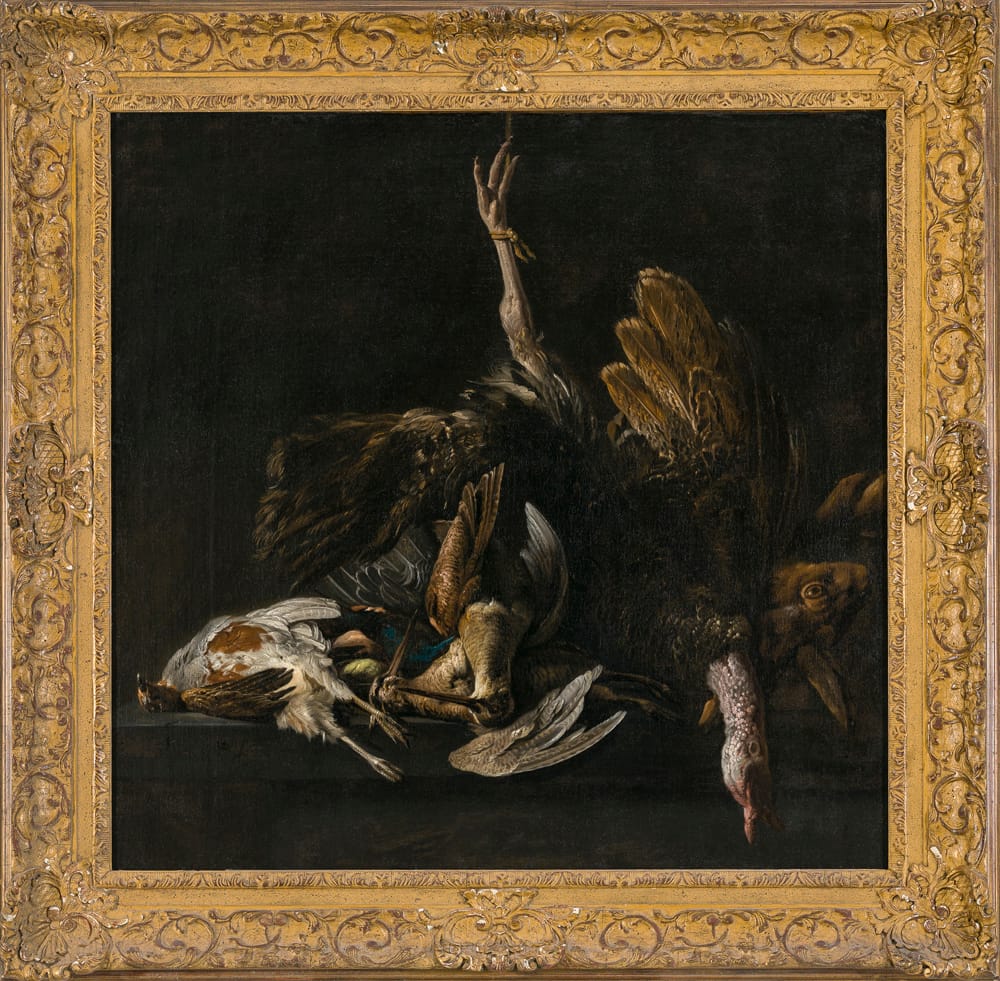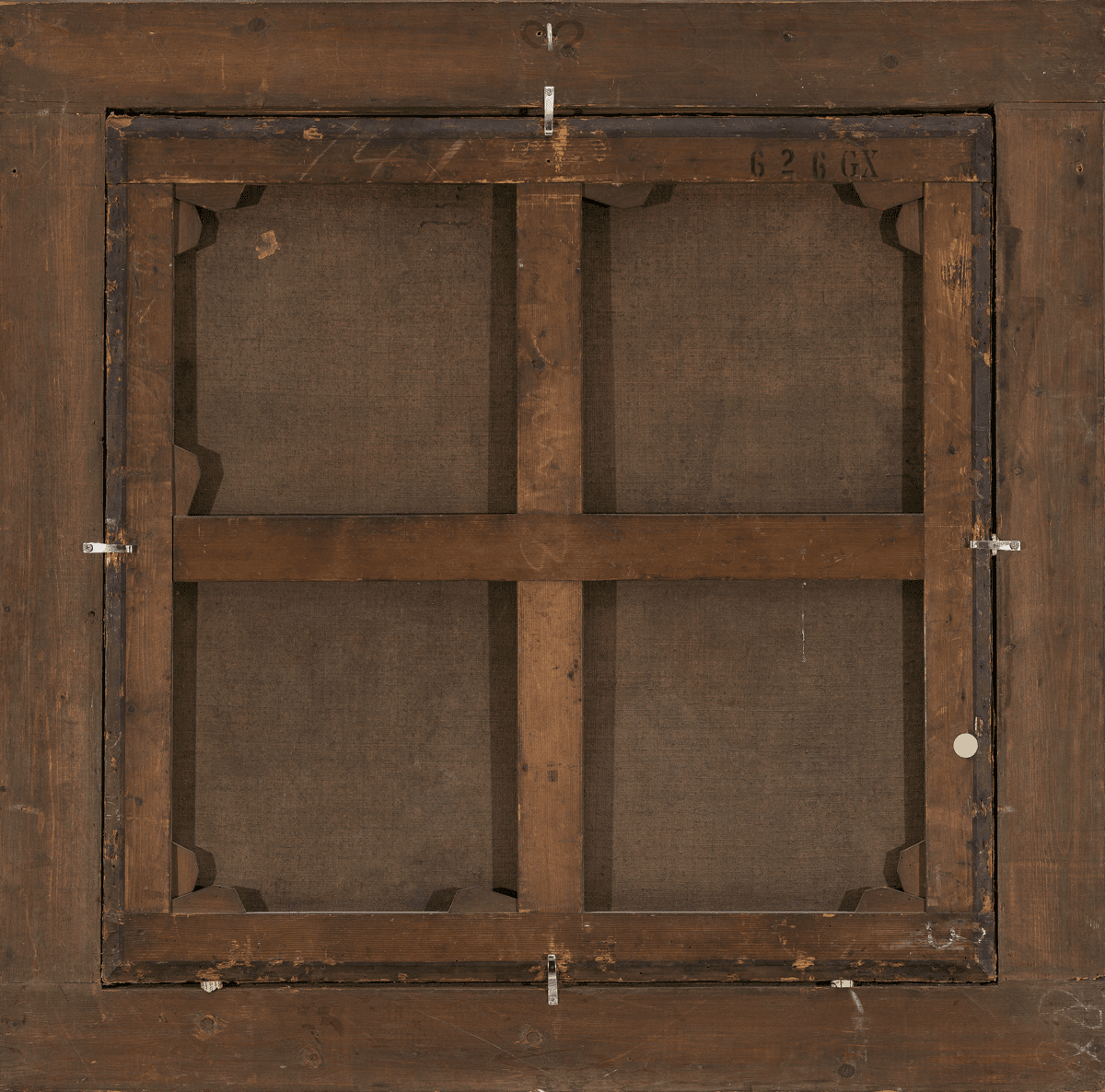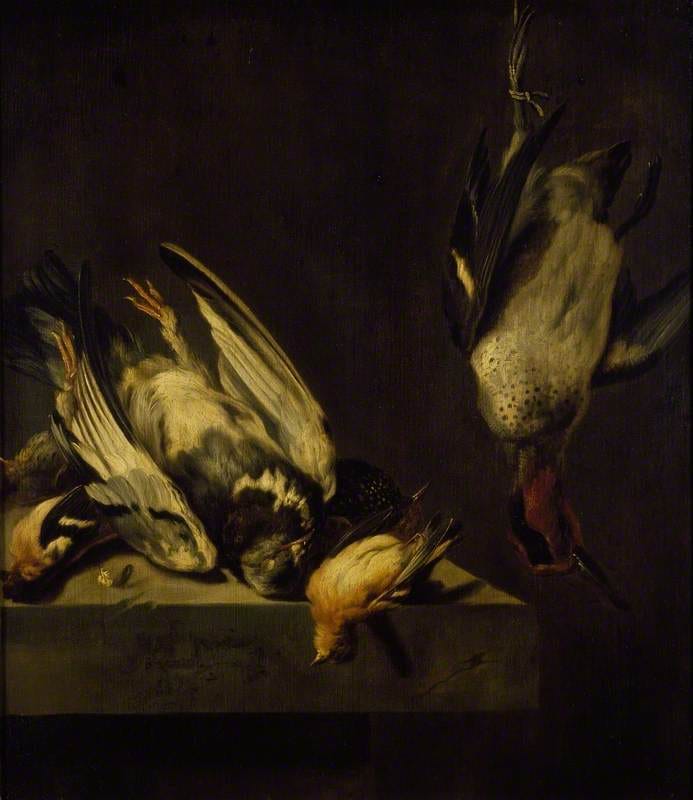JAN VONCK (Torun 1631 – c.1663/64)
Jan Vonck (Torun 1631 – c.1663/64)
Still Life with Game on a Stone Ledge
Oil on canvas, 85.5 x 87.7 cm (33.7 x 34.5 inch); presented in a giltwood frame of early 18th-century model
Indistinctly signed ‘Vonck’ (lower left, on the ledge)
Provenance
Private collection, The Netherlands
***
Jan Vonck was born in 1631 in Torun, also known as Thorn, in the North of Poland as the son of the Amsterdam painter Elias Vonck (1605–1652), who worked in Poland from 1631 to 1639.1 Jan received his artistic training from his father in Amsterdam during the early 1640s, and followed in his footsteps by specialising in still lifes, frequently depicting fish or the attributes of hunting and shooting. Such paintings were very sought after by the nobility and landed gentry, who enjoyed the country sports. Not much is known about Vonck’s life, but he is thought to have spent his working years in Amsterdam, where he also married Trijntje Jans on 6 December 1653. Like his father, he collaborated with the landscape painter Jacob van Ruisdael (1628/29–1682), painting animals in his landscapes.
Paintings by Vonck are preserved in the collections of the Rijksmuseum, Amsterdam, the Musée des Beaux-Arts, Besançon, the Dordrechts Museum, Dordrecht, the Groninger Museum, Groningen, the Boymans Van Beuningen Museum, Rotterdam and the Nationalmuseum, Stockholm. The current picture can for instance be compared to a Still Life with Dead Birds in the Boymans Van Beuningen Museum in Rotterdam (fig.).2 It can further be compared to his Still Life of Game on a Stone Sill in the Ashmolean Museum in Oxford (fig.).3
The present work is a particularly large and impressive still life by Vonck, probably dating to around 1650-1660. Arranged in a triangular composition on a stone ledge are the spoils of a successful day hunting and shooting: from left to right we see a partridge and two woodcocks, the two preferred birds for consumption since the Middle Ages. Between the partridge and woodcocks lies a brightly coloured bird, presumably a wood grouse. The centre of the composition is formed by the turkey, one of its legs suspended by a rope. Turkeys had been introduced into Europe during the sixteenth century, imported from their original habitat of North and Central America – by the middle of the seventeenth century, they were widespread. At the right edge of the painting we see a hare, particularly difficult to shoot and therefore considered a great prize for sportsmen.4 Unlike many other artists of his time, Vonck does not show the animals ready to be cooked or displayed on expensive platters as tokens of wealth and status. They seem to exist in a placeless world, out of time. Vonck’s painting confronts us with the basic facts of life – and death.
1.For the artist, see Adriaan van der Willigen and Fred G. Meijer, A dictionary of Dutch and Flemish still-life painters working in oils: 1626-1725, Leiden 2003, p. 210.
2. Oil on panel, 47.6 x 43.8 cm, inv. no. 2205 (OK); Museum Boymans-Van Beuningen. Catalogus schilderijen tot 1800, Rotterdam 1962, p. 239.
3. Oil on panel, 52 x 45 cm, inv. no. WA1940.2.90.
4. We are grateful to Klaas Post, former curator of the Natural History Museum in Rotterdam, for these identifications.






